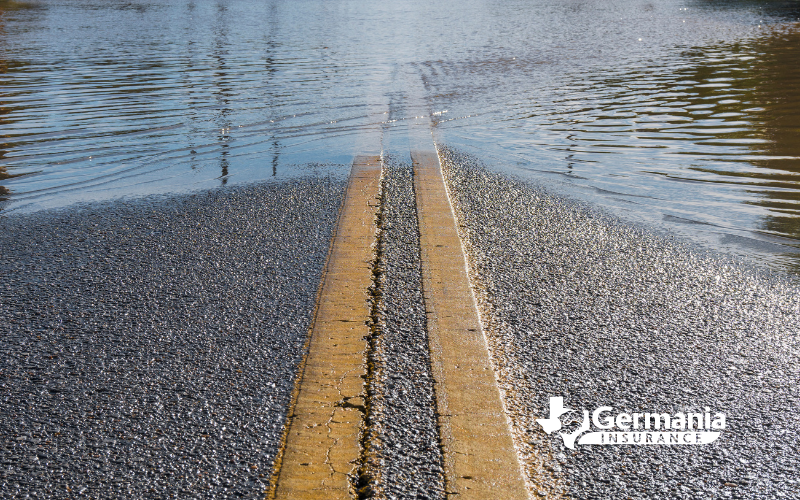Learn about the various flood risks in Texas and how to prepare for them.

Floods are a common natural disaster, especially in Texas, where varying weather conditions and geographical features contribute to their frequency. This guide aims to provide you with the necessary information about the causes of flooding in Texas and how to prepare and stay safe to minimize the damage.
Understanding Texas Floods
Floods are among the deadliest and most damaging weather events in Texas. This is largely due to the state's unique geographical characteristics and weather patterns, which make it susceptible to various types of floods.
Flash Floods in Texas
Flash floods are sudden, extreme surges of water into dry areas. They often occur without warning, turning streets into rivers and sweeping away everything in their path. These floods are particularly dangerous as they can occur with little to no warning, leaving little time for people to react. Furthermore, the rapid rise in water levels can create strong currents that make it difficult for people and vehicles to escape.
Causes of flash flooding in Texas include:
- Heavy Rainfall: Texas frequently experiences torrential downpours, particularly during the spring and fall months. When heavy rainfall occurs in a short period, the ground can become saturated quickly, causing water to flow rapidly into streams, creeks, and low-lying areas.
- Slow-Moving Storms: Thunderstorms that move slowly or stall over an area can dump large amounts of rain in a concentrated location, leading to flash flooding.
- Urbanization: The expansion of cities covers more land in impervious surfaces, increasing runoff during rainfall events and exacerbating flash flooding.
- Dam or Levee Failures: Sudden release of water due to dam or levee failure can cause catastrophic flash flooding.
- Burn Scars: Areas that have recently experienced wildfires may be more susceptible to flash flooding, as scorched soil is less able to absorb water, leading to rapid runoff.
River Flooding in Texas
River flooding occurs when water levels in a river rise and overflow their banks, spilling into typically dry areas. This can be caused by heavy rains, dam failures, rapid snowmelt, and ice jams.
Flooding from Tropical Systems
Tropical systems, including hurricanes, can bring heavy rains to the Texas coast and further inland. Storm surges and waves from these systems are major causes of flooding. The agitating water from the storm can undermine building foundations, leading to structural damage.
Flood Risks in Texas
Texas has a region known as Flash Flood Alley, which stretches from the Rio Grande Valley in the south, through Central Texas, to the Dallas-Fort Worth Metroplex in the north. This area is particularly prone to flash flooding due to its unique combination of geography, climate, and urban development.
However, it's important to note that even if you don't live in Flash Flood Alley, your area can still be impacted by flash flooding. Any area with the right geographic features and urban development can flood if rainfall is sufficient.
Dangers of Flash Floods
Flash floods pose numerous hazards to both people and property. These include:
- Drowning: According to the Centers for Disease Control and Prevention (CDC), over half of all flood-related drownings occur when a vehicle is driven into floodwaters.
- Structural Damage: Rushing water can cause significant damage to buildings, roads, and bridges.
- Contaminated Water: Floodwaters often contain dangerous contaminants, posing health risks if a person comes into contact with the water.
- Electrocution: Floodwaters can cause electrical hazards if they come into contact with power lines or electrical systems.
- Mold and Mildew: After floodwaters recede, damp conditions can encourage the growth of mold and mildew, posing potential health risks and causing damage to structures.
Preparing for a Flood in Texas
Flood preparedness involves understanding the risks, creating an emergency plan, building an emergency kit, and taking steps to protect your property. Here are some tips to help you prepare:
- Identify Your Risks: Use resources like FEMA's Flood Map Service Center to identify if you're at risk of flooding.
- Purchase Flood Insurance: Homeowner’s insurance policies don’t typically cover flood damage. Consider purchasing flood insurance through the National Flood Insurance Program.
- Safely Store Important Documents: Keep important documents like birth certificates, passports, insurance papers, and medical records in a watertight safety deposit box.
- Create An Emergency Kit: Include essential items like food, water, first aid supplies, flashlight, batteries, and prescription medications in your kit.
- Prepare to Evacuate: Know the evacuation routes in your area and make a plan with your family. Ensure you have fuel in your vehicle, and include your pets in your evacuation plan.
Staying Safe During a Flash Flood
If a flash flood warning is issued in your area, take immediate action to protect yourself and your property. Here are some steps to take:
- Move to Higher Ground: If possible, move to higher ground immediately. Avoid walking or driving through floodwaters.
- Stay Informed: Keep updated on local weather conditions and emergency alerts.
- Avoid Electrical Hazards: Do not use electrical appliances that have been submerged in water until they have been deemed safe.
- Be Cautious When Returning Home: Look for signs of structural damage and avoid entering if you suspect the building may be unstable.
- Watch for Potential Hazards: Be aware of your surroundings and watch for potential hazards like downed power lines or submerged objects.
Conclusion
Floods are a serious concern in Texas, and being prepared can significantly reduce the risks and potential damage. Stay informed about weather conditions, understand the causes of floods in your area, and take proactive steps to protect yourself and your property. Always remember - in the event of a flood, your safety and the safety of your loved ones is the most important thing.

Have a question about insurance? Find an independent agent here!